SPECIAL
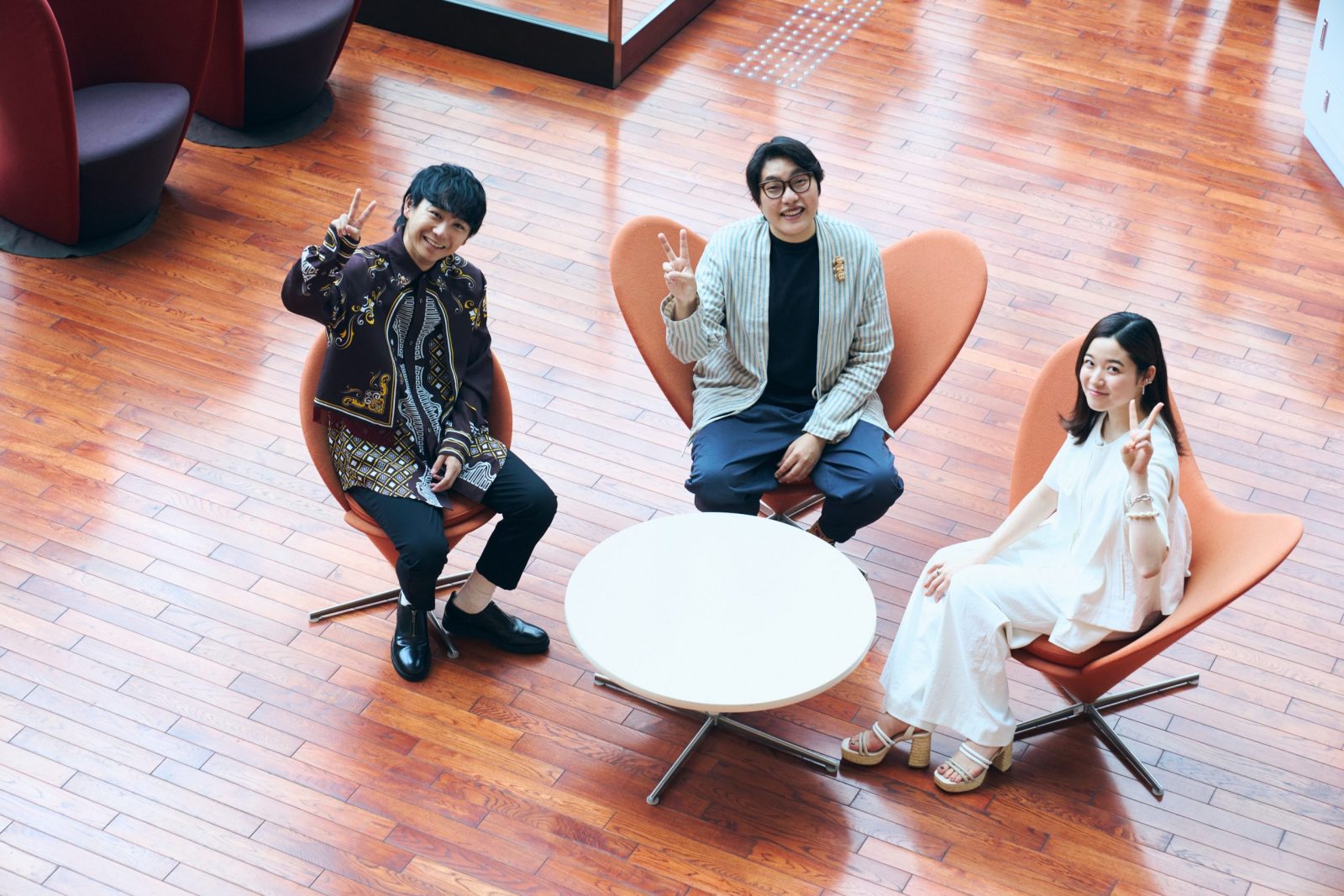
Yuichi Kinoshita x Kenta Suga x Ryoko Fujino Special Talk [Part 2]
A requiem and an ode to the Edo period
In the second part, we will take a deeper look at the content of Kinoshita-Kabuki "Sannin Kichisa Kuruwa no Hatsugai" which will be performed at the Tokyo Festival 2024. We will ask about the world that is seen during the five-hour performance and their thoughts on each role.
(Reporting and writing: Kawazoe Fumiko; Photos: Masunaga Ayako; Editing: Hiroyuki Funayose)
▷Click here for Part 1
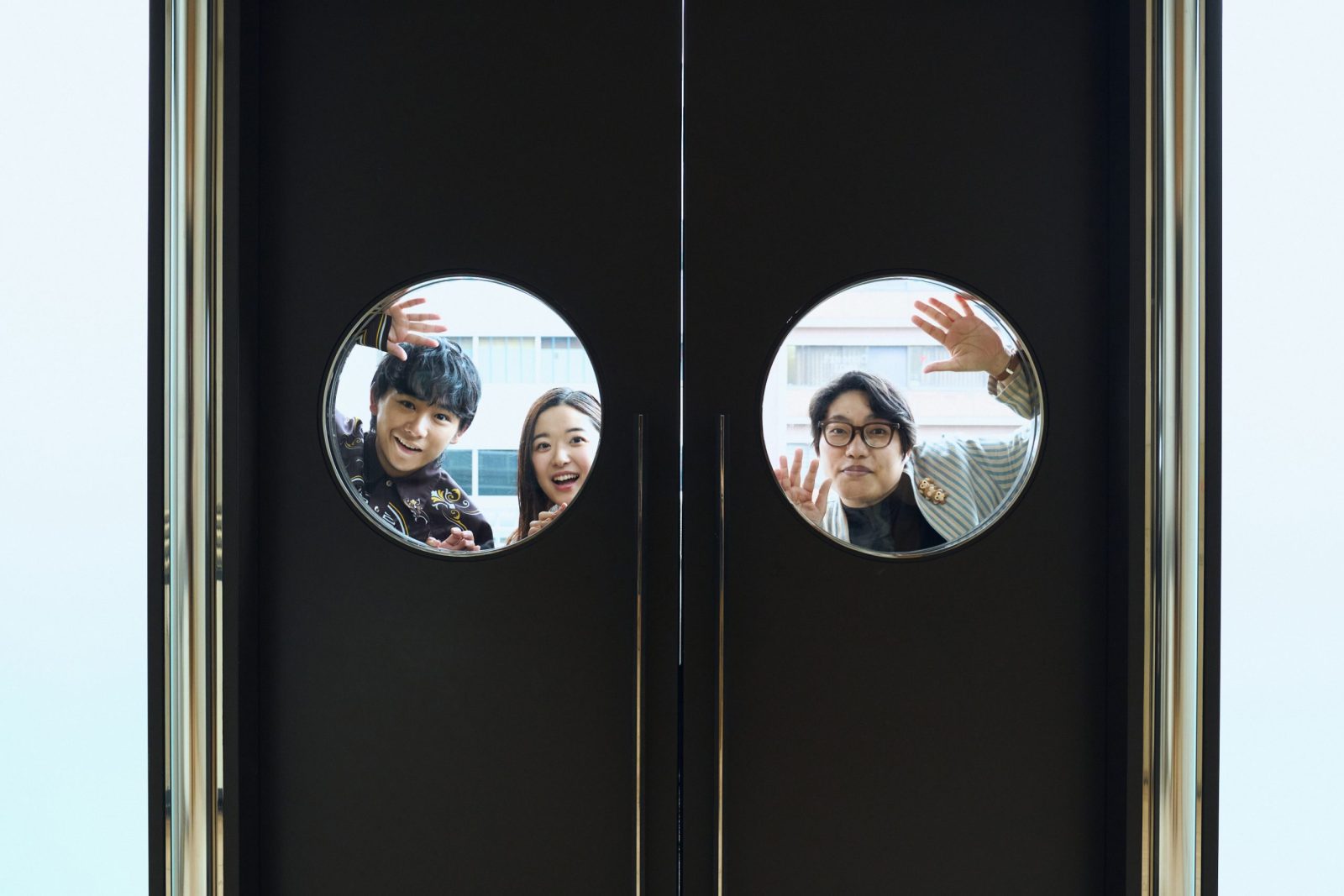
A story of rising from the experience of epidemics and earthquakes
The original production included episodes that are cut from current Kabuki productions, such as the story of the love between a merchant and a courtesan in the brothel. The revival of the "Hell Scene," which is said to have only been performed at the original production about 160 years ago, was also a hot topic. And this time, the title will be changed from "Sannin Kichisa" to "Sannin Kichisa Kuruwa no Hatsugai Hatsugai," the original title.
Kinoshita: It's like a declaration of our determination that "we will make this production with the same volume as the original."
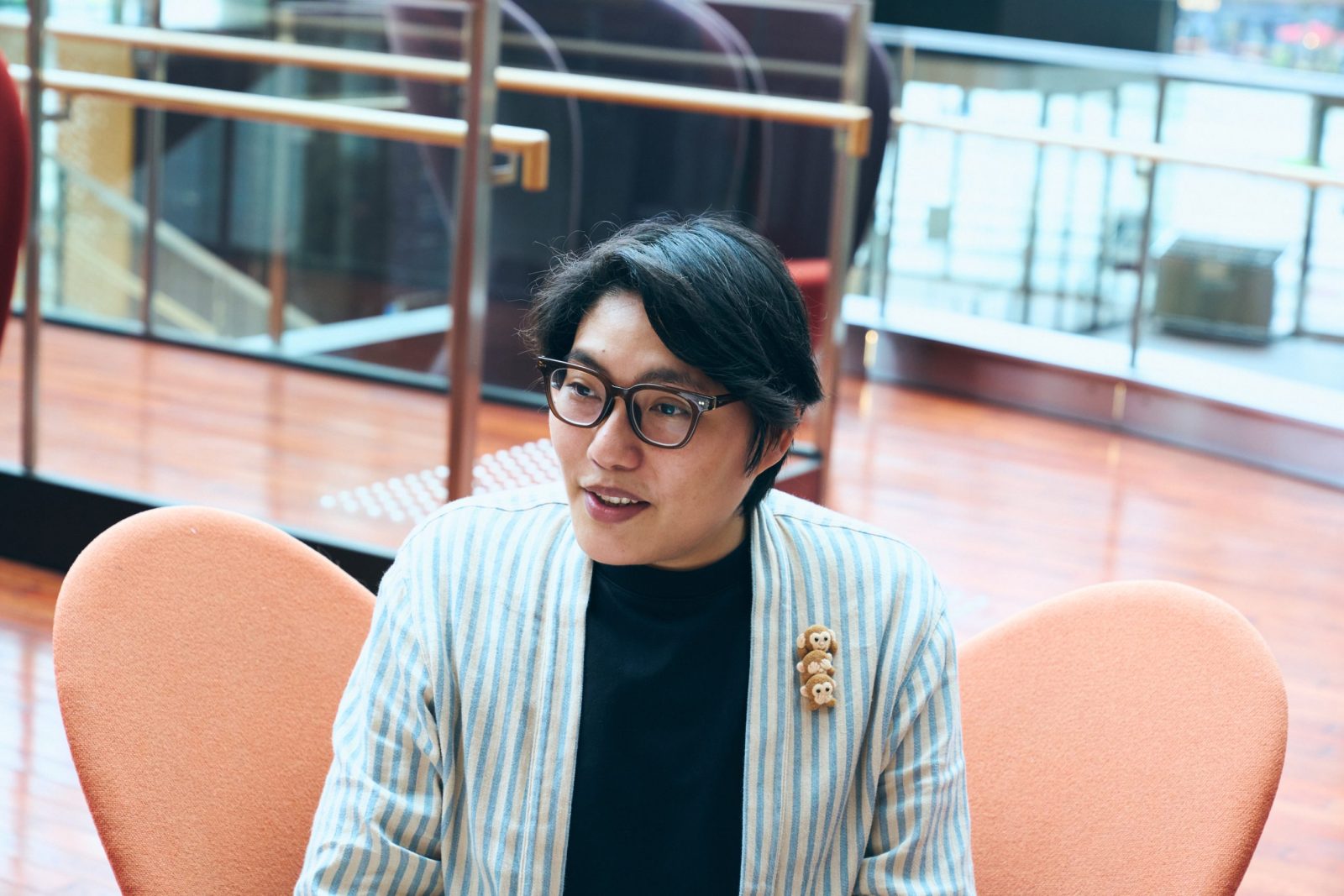
-What do you think is the significance of re-staging the performance in 2024?
Kinoshita: This work premiered in the 7th year of the Ansei era. Two years earlier, in the 5th year of the Ansei era, there was a cholera epidemic that is said to have killed tens of thousands of people in Edo alone. And even before that, in the 2nd year of the Ansei era, the Great Edo Earthquake occurred. This was an earthquake that hit the capital directly, and many people were affected. In other words, it was performed in an era that revealed just how fragile our daily lives are. There is a sense of obstruction in the work, and all the characters live with anguish, which was probably very realistic for the audience at the time. I feel like you can also sense the message of the author, Mokuami Kawatake, who says, "It's sad that people die, but it's also painful to be alive."
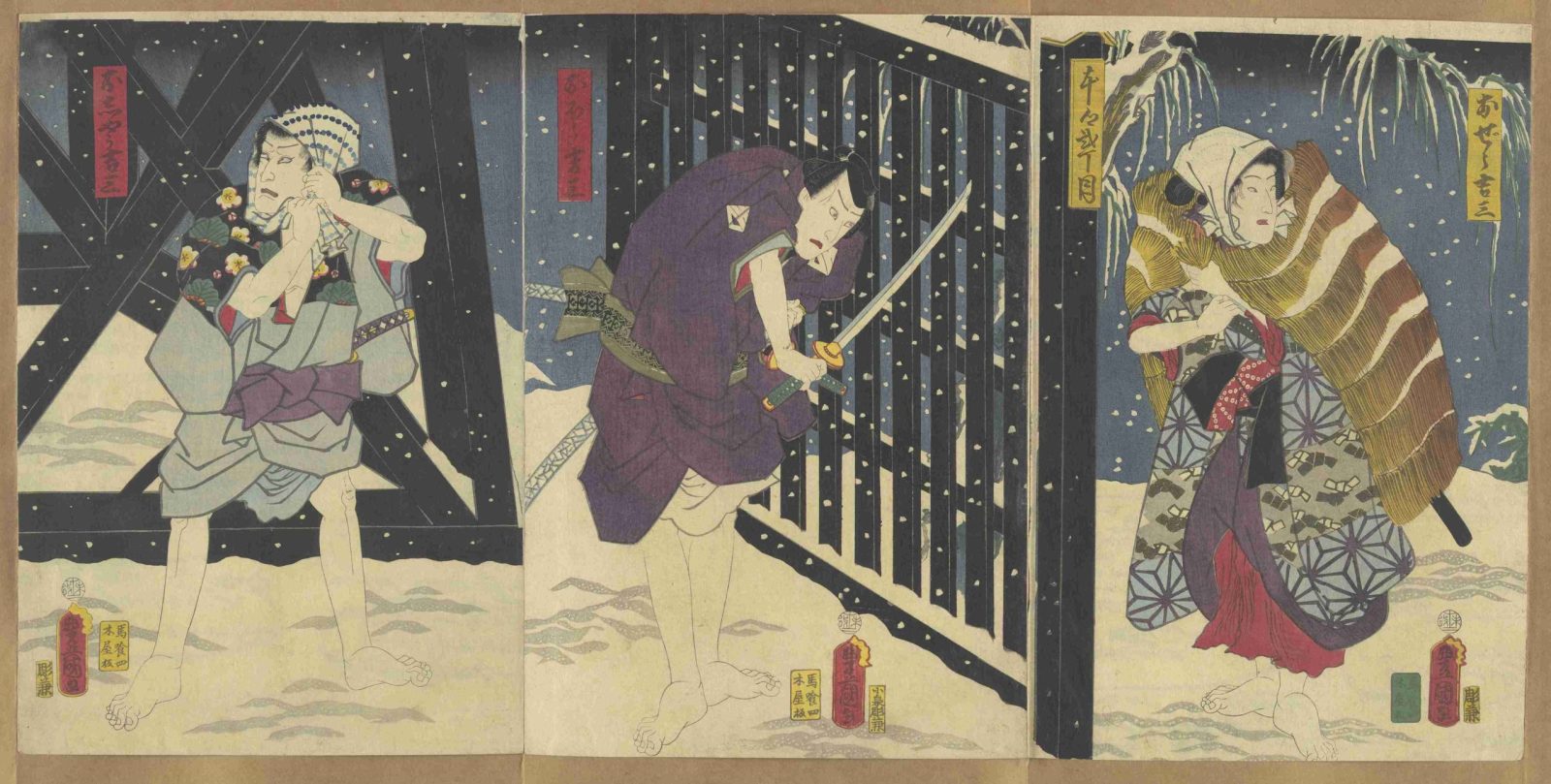
We are still under the influence of the global pandemic, including the economic situation, and there was also the Noto Peninsula earthquake at the beginning of this year. The "difficulties of life" faced by the characters may seem more relatable to you.
Kinoshita: To me, it also feels like a cheer for people who are suffering. In the "Hell Scene," there is a person who died of cholera, and King Enma, Murasaki Shikibu, and Jizo Bodhisattva are having a wild party; it's a ridiculous and incomprehensible scene (laughs). I think that it also sends the message, "Everyone has lost a family member, but hell might be a really fun world." I think it also resonates as a kind of requiem.
Dreams and reality, a mirror-like structure
Next, I would like to ask about the story and the roles that Suga and Fujino will play. "Sannin Kichisa Kuruwa no Hatsugai" is an ensemble drama that intertwines the story of the "three Kichisaburo" - a priest, a young lady, and a young lady who rush through the mercy of a strange fate - with the story of the brothel surrounding the love between the merchant Fumiri and the courtesan Kazue. Suga plays the hot-blooded priest Kichisa, and Fujino plays his younger sister Kazue.
Suga: I think the relationship between the monk and his fellow priest and princess is important, so I want to cherish the process of putting it together with the two of them in the rehearsal hall. I want to be able to express the conflicts and anguish that the monk does not show through his facial expressions, gestures and lines. If he were to play it normally according to the script, he would probably be a pathetic character, but when it comes to a Kabuki performance, I think the monk's "coolness" is an essential point. I think the key is to balance this with the persuasiveness of a modern version.
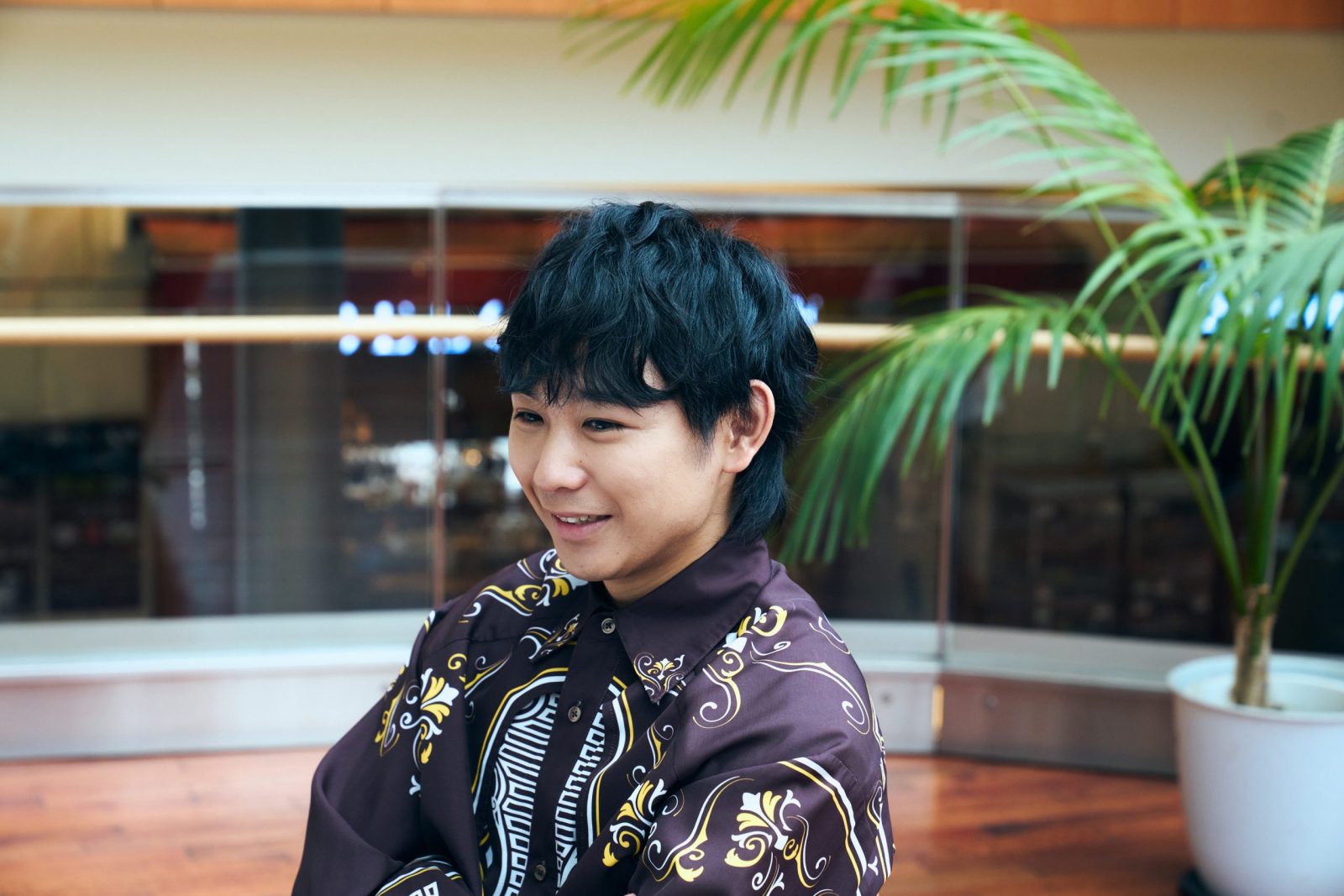
Fujino: I recently went to the former site of Yoshiwara to understand the background of Hitoe. I heard that even today, offerings and incense are constantly being made to Yoshiwara Shrine, which has been worshipped as the guardian deity of the red-light district... I also made an offering while thinking of Hitoe.
Kinoshita: You're a hard worker! When you went there, did you find that Yoshiwara was smaller than you'd imagined?
Fujino: It's certainly a size that you can get around in the blink of an eye, and I thought that if you were locked up there for a long time, you would want to escape, you would want to see the outside world.
Suga: This sense of doing thorough research is what makes her seem like a reliable, well-rounded little sister, and it really gives me a sense of security!
(Everyone laughs)
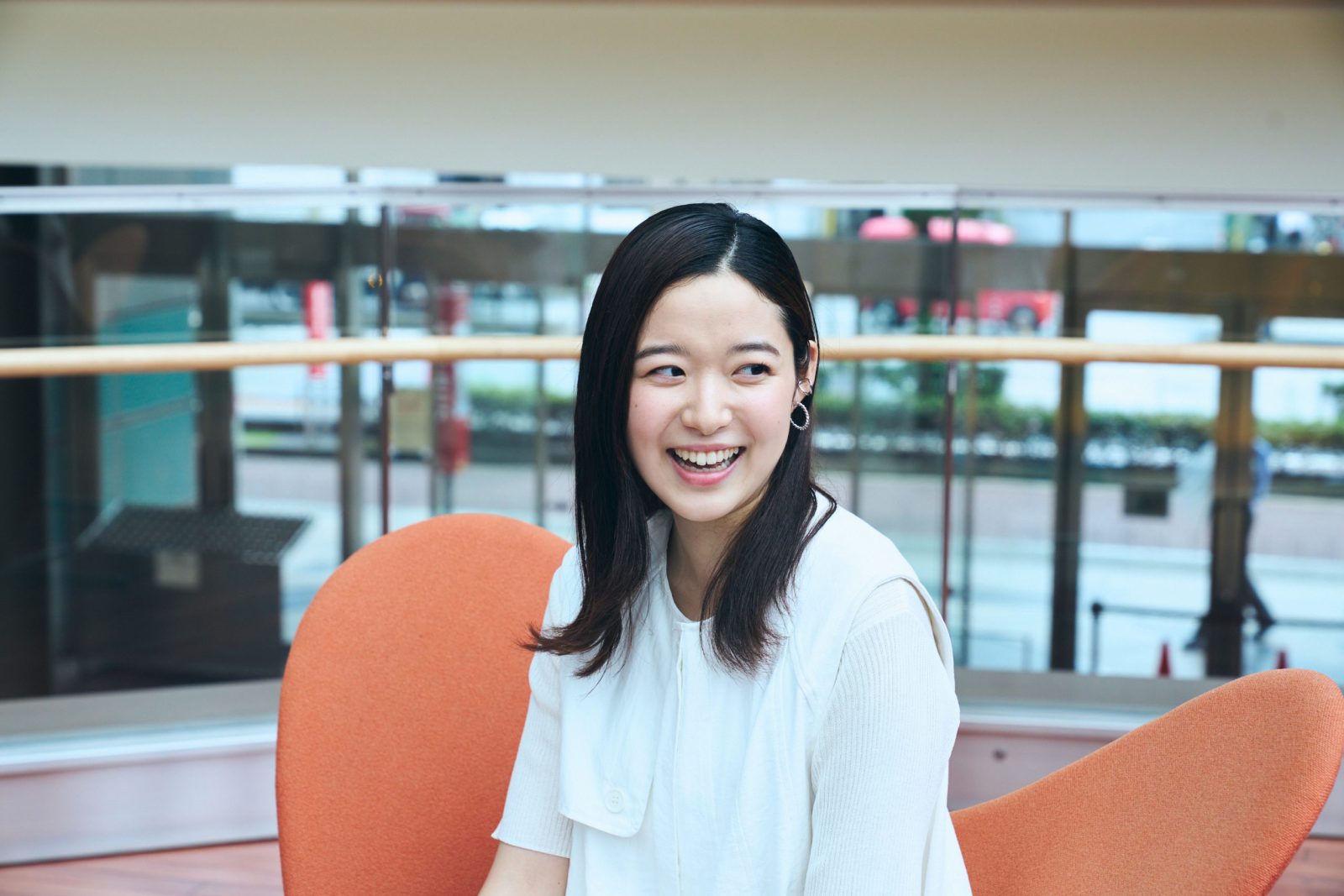
Kinoshita: The "Kichisaburo part" features three heroes in a realistic world after the plague and earthquake disaster, where people die and separated families are reunited, and the "Kuruma part" depicts real human relationships such as lovers and couples in the hallway of the fantasy space of Yoshiwara. Both parts are like two mirrors, combining dreams and reality, but the only ones who connect the two worlds are these siblings. The other characters barely intersect. In that sense, these two are also key people. Having both parts adds depth to the work and makes it more interesting to contrast them. I think that the fact that it has both parts is a major attraction of the performance.
--Structurally, the two stories unfold alternately, and the gold 100 ryo and the sword Koshinmaru move around the story as if weaving a thread of causality, so reading it all the way through makes the development of the story much clearer.
Kinoshita: When thinking about this work, "cause and effect" is an important point. When one incident occurs, it spreads to places that are completely unrelated... everything is connected. The characters include samurai, townspeople, and prostitutes. It is an ensemble drama with various attributes and all classes. Perhaps Mokuami wanted to say that "the whole of society is connected" through the expression "cause and effect". If we think again about the time when the play was first performed, earthquakes happen, diseases spread, everything is absurd, isn't it? Disasters happen for no reason. Humans are most anxious and sad when they are hit by "absurd reality" that they cannot control. I can also feel Mokuami's passion to "re-examine such situations through the value of causality and try to overcome them." Because it is human imagination that thinks about such things. "What goes around comes around" is apparently a motto that Mokuami himself lived by.
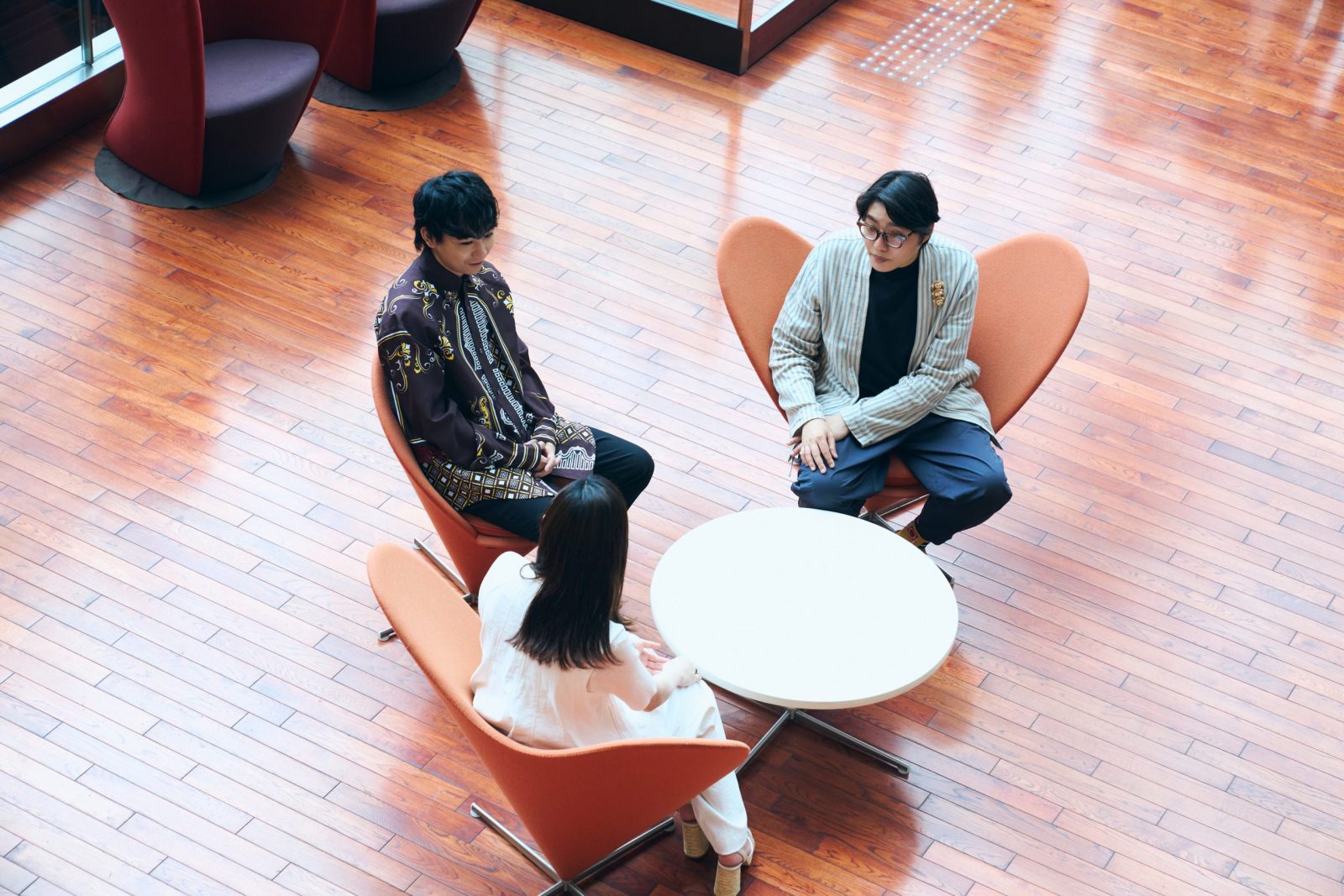
Performing the play through may make Mokuami's intentions clearer. The sins of the parents are repaid by their children... We can also see that the three Kichisaburo boys were forced to become thieves because of a life with few options.
Kinoshita: Furthermore, if we assume that the child that Hitoe gives birth to in the play is born in the 7th year of the Ansei era, he would be in his 30s or early 40s during the Sino-Japanese and Russo-Japanese wars. So it's possible that he would have been sent to war during the Sino-Japanese War at the very last moment. If he lived until the Pacific War, he would be 85 years old when the war ended. The history of modern warfare that Japan has gone through since the Edo to Meiji era is shouldered by an even younger generation than these characters... If we stretch our imaginations to that extent, I believe that this is a work that should be performed now, a meaningful work.
--I see, there have been earthquakes, epidemics, global unrest, war... The various things experienced during the five-hour performance are likely to give rise to insights into history and modern society. One of the joys of the Tokyo Festival is watching multiple performances and seeing the world from multiple perspectives, but could you tell us about your enthusiasm and thoughts about performing at the Tokyo Festival, Mr. Suga and Mr. Fujino?
Suga: I'm very happy to be able to participate in a project that brings together various performances to create a festival. "Performing arts" sounds a little formal, but if you think of it as a "festival," it feels a lot more relaxed. I think that especially young people feel that just watching a play is a high hurdle. It's a perfect entry point for beginners, and doesn't the word "festival" make you excited?
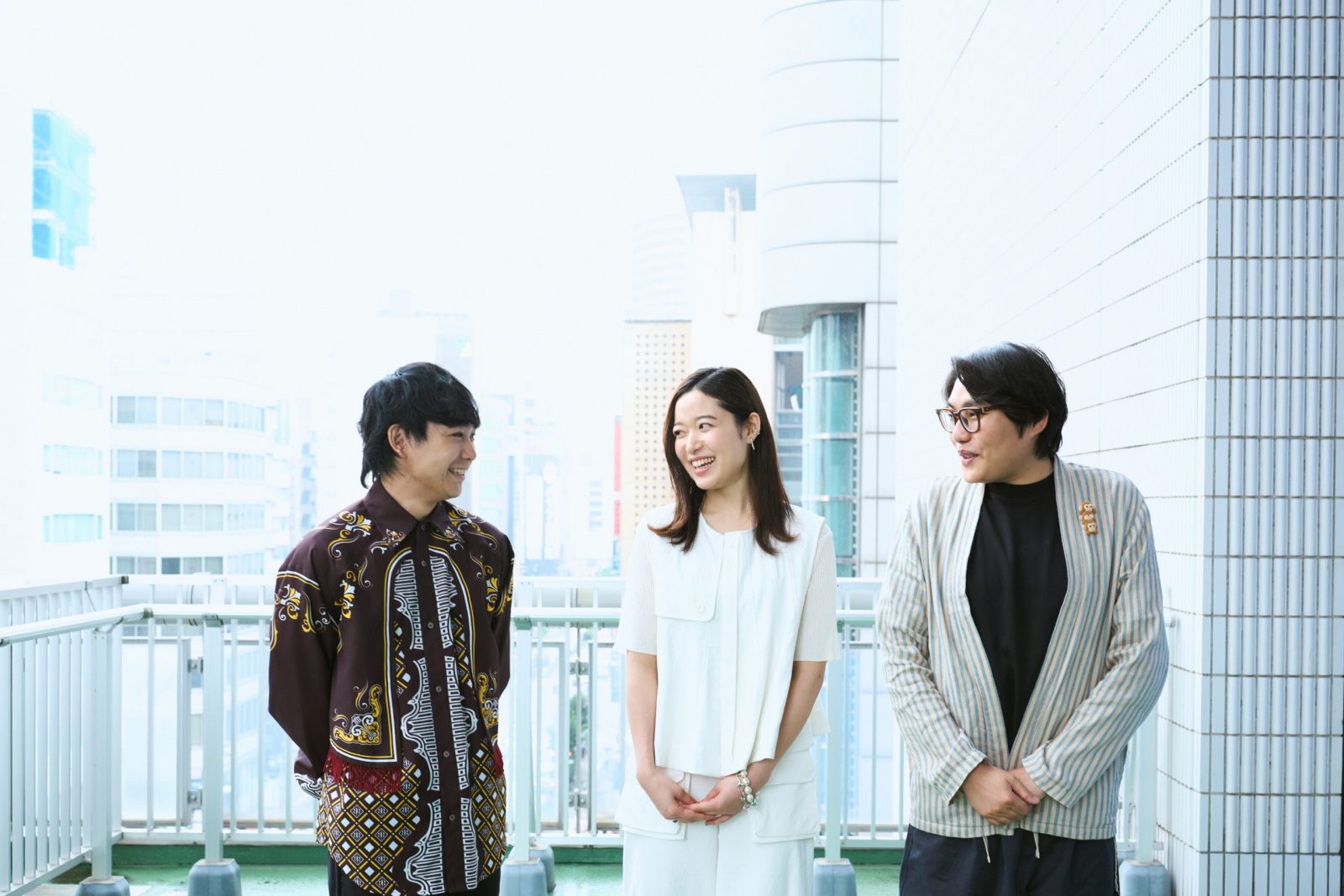
Fujino: Really! There are also events like the "Family Art Club" where parents and children can participate together, and the "Asian Performing Arts Camp" where performers active in Asia hold discussions. The breadth of the programs is wonderful. As Suga-san said, it would be great if it could become a starting point for beginners.
--Finally, Mr. Kinoshita, could you give us a message for everyone?
Kinoshita: We've talked about a lot of tricky things, but this work is not only serious, it's also a road movie with three heroes, and it's very well done as entertainment. In the long five-hour performance, it's full of elements like the seeds of all kinds of stories that make you think, "Is this really a work from 160 years ago?" Even if you're not interested in Kabuki or don't like history, it's okay! I hope many people will come and see it.
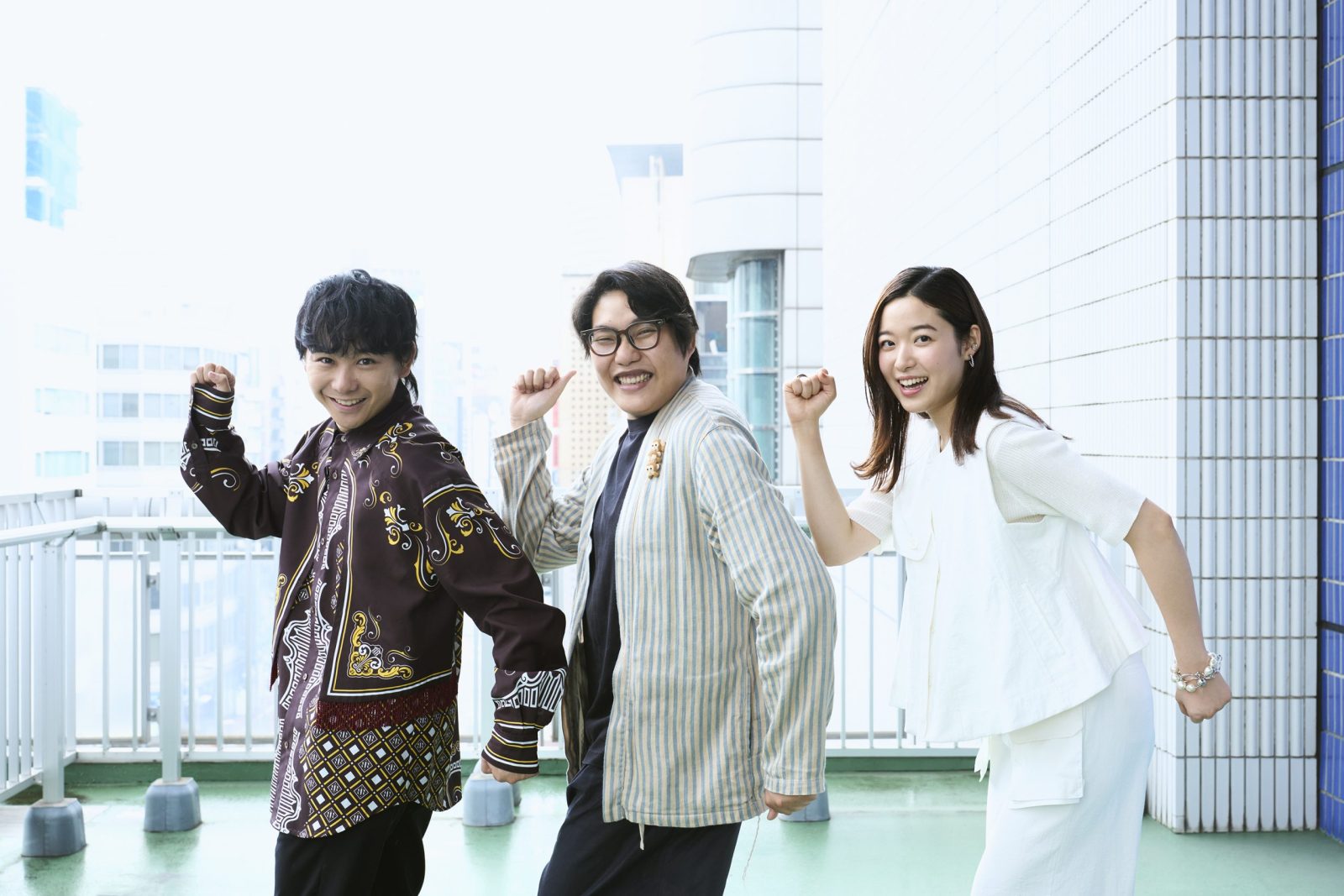
Yuichi Kinoshita was born in Wakayama Prefecture in 1985. He is the founder of Kinoshita-Kabuki . In 2006, while studying at Kyoto University of Art and Design, he launched Kinoshita-Kabuki that revisions and enhances the performances of classical plays. He has received many awards, including the New Artist Award at the 2016 Agency for Cultural Affairs, Government of Japan Arts Festival and the Encouragement Award at the 38th (2019) Kyoto Prefecture Cultural Awards. He will be the artistic director of Matsumoto Performing Arts Center (Nagano) from 2024.
Kenta Suga made his debut as a child actor in 1999. He gained attention in the TV drama "Be Kind to People" broadcast in 2002, and has since been active in stage and film productions. Recent stage appearances include Gekidan Shinkansen's "Smoke Army," "Shukkuri to Unshin," and "Blood Wedding." In the summer of 2023, he will also make his directorial debut with the theater company "Haikyu!!"
Ryoko Fujino made her debut as the lead in the 2015 film Solomon's Perjury. She won numerous awards for her performance in the film, including the Newcomer of the Year Award at the 39th Japan Academy Awards. She is also active on stage, and recent appearances include Nitosha's We Know Nothing, Romeo and Juliet, and Good.
Tokyo Metropolitan Theatre Autumn Selection Tokyo Metropolitan Theatre Presents Kinoshita-Kabuki "Sannin Kichisa Kuruwa no Hatsugai"
Written by Mokuami Kawatake
Supervision and revisions: Yuichi Kinoshita
Directed by Kunio Sugihara[KUNIO]
Cast: Shunsuke Tanaka, Kenta Suga Ryotaro Sakaguchi, Ryoko Fujino, Seiichi Kohinata, Moeka Fukasawa
Kimio Taketani, Noemi Takayama, Noemi Takayama, Kota Yamaguchi Taku Takei, Yuya Tanaka, and Fumie Midorikawa
Jay Kabira/ Tamaki Ogawa, Hidekazu Mashima
Swing: Toshihiko Sato, Shoko Fujimatsu
Period: September 15th (Sun) - September 29th (Sun), 2024
Location: Tokyo Metropolitan Theatre Playhouse Language: Japanese (Portable English subtitle units available for rental, limited time and number)
Price: All seats reserved, tax included. General S seats 9,500 yen, A seats 8,000 yen, side seats 5,500 Kichisawari. 25,500 yen (General S seats for 3 people on the same day)
Early bird S seats: 8,500 yen A seats: 7,000 yen (only for performances on September 15th (Sun) and 16th (Mon/Holiday))
Swing actor performance S seats: 8,500 yen A seats: 7,000 yen (only for the performance on Thursday, September 26th)
65 years old and over (S seats) 9,000 yen / 29 years old and under (A seats) 7,500 yen / High school students and under 1,000 yen / Act-viewing seats 2,500 yen
▷Click herefor details of the program





